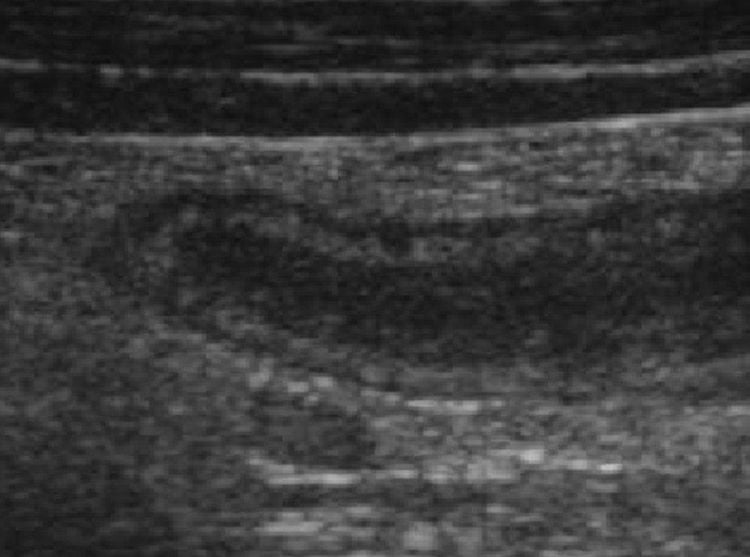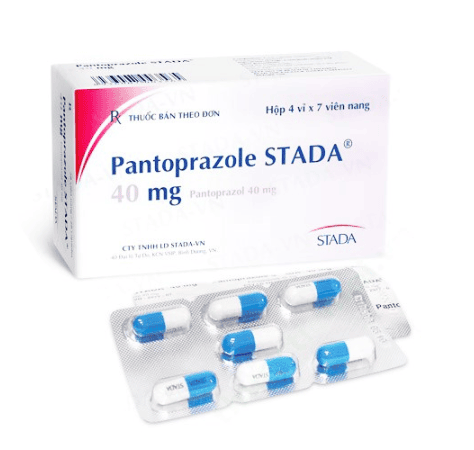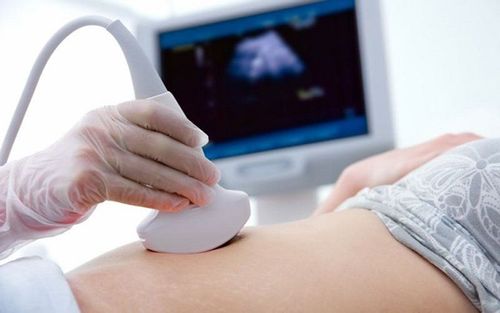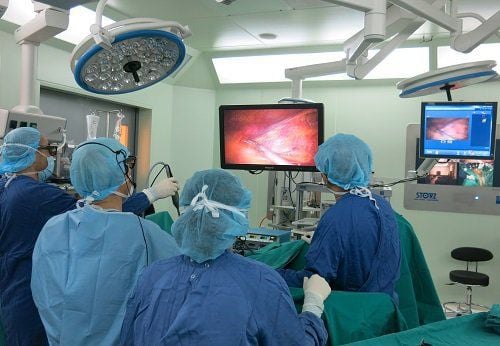This is an automatically translated article.
Acute appendicitis is a dangerous digestive disease and the progression is also very fast. This is a condition that can occur at any age. If the disease is detected and treated promptly by removing the appendix, the disease will take place quickly and simply. However, if left too late, the appendix can rupture or cause an abscess, an infection that can even be life-threatening.
1. Urgent Signs of Appendicitis
The signs of acute appendicitis are a variety of symptoms including:
Cramping abdominal pain localized to the right iliac fossa; Mild or moderate fever; Vomiting, nausea; Digestive disorders ; Loss of appetite. Not all cases will have the same symptoms, but these are important signs that you need to see your doctor as soon as possible.
1.1. Abdominal pain Acute appendicitis usually begins as a dull ache, cramping, or aching pain throughout the abdomen. Abdominal pain is the first and always present sign of the disease. Abdominal pain caused by appendicitis typically has the following characteristics:
Abdominal pain begins in the area around the navel or above the navel. Pain increases gradually over the next 2 to 12 hours Pain point moves down to the right iliac fossa The nature of the pain is dull, intense, continuous, increasing when coughing or changing position. Abdominal pain is the most reliable clinical symptom of acute appendicitis.
In addition, because the location of the appendix is very diverse, depending on the location of the appendix, each person will have very different feelings about the pain location such as:
Pain in the hip and back when the appendix is behind the cecum; Lower abdominal pain when the appendix is in the pelvis; Pain under right flank in case of subhepatic appendix); Lower back pain, pelvic pain when the appendix is behind the colon.

Vị trí viêm ruột thừa cấp tính thường gây cơn đau cho người bệnh
Some cases may have a high fever due to complications of peritonitis causing severe infection. A high fever above 38.3 degrees Celsius with an increased heart rate may mean the appendix has ruptured.
1.3. Gastrointestinal disorders Appendicitis can cause signs of digestive problems such as severe constipation or diarrhea. In addition, many people experience nausea and vomiting, loss of appetite, and feeling unable to eat. It is worth noting that signs of anorexia or loss of appetite are not definitive, but are almost always co-occurring in acute appendicitis.
Some people may also have difficulty passing gas, which could be a sign of a partial or complete blockage of the bowel. This may be related to an underlying appendicitis.
The order of appearance of digestive signs is usually: Anorexia - Abdominal pain - Vomiting. When vomiting occurs before abdominal pain, it should be carefully considered.
2. Diagnosis of appendicitis
To diagnose acute appendicitis, doctors will perform a physical exam and ask questions about symptoms. Your doctor will also order certain tests to determine if you have appendicitis. Some tests include:
Blood tests to look for signs of an infection; Urinalysis to identify signs of kidney stones or urinary tract infection; Abdominal ultrasound, CT scanner. Due to the varied nature of appendicitis, appendicitis can be very easy or very difficult to diagnose. In fact, there is currently no single symptom, clinical sign or laboratory test that can confirm appendicitis in all cases. The diagnosis is often combined based on the clinical picture, physical examination and other laboratory tests.
If the doctor diagnoses acute appendicitis, emergency surgery for appendicitis is indicated.
The surgeon can perform an open appendectomy or laparoscopic appendectomy. This depends on the severity of the acute appendicitis.

Hình ảnh viêm ruột thừa cấp tính được nhìn thấy qua siêu âm ổ bụng
3. When to see a doctor?
Acute appendicitis is an abnormal pathological manifestation of the appendix. Clinical symptoms of the disease are very diverse, so it is difficult to recognize and diagnose accurately. However, when there are signs of suspected appendicitis, you need to immediately go to the medical center for examination, diagnosis and timely treatment.
Immediate treatment is important if you have acute appendicitis. When appendicitis is left untreated, the appendix ruptures. This releases bacteria and harmful substances into the abdomen. At that time, the sick person will spend more time in the hospital, possibly even endangering his life.
Please dial HOTLINE for more information or register for an appointment HERE. Download MyVinmec app to make appointments faster and to manage your bookings easily.
References: healthline.com, mountelizabeth.com.sg, mayoclinic.org












